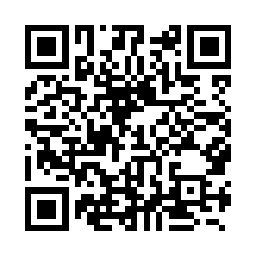
25I-NBOMe

Psychedelic film25I-NBOMe (2C-I-NBOMe, Cimbi-5, also shortened to '25I') is a synthetic hallucinogen that is used in biochemistry research for mapping the brain's usage of the type 2A serotonin receptor; it is also sometimes used for recreational purposes. It is derivative of the substituted phenethylamine 2C-I and is the most well-known member of the 25-NB family. It was discovered in 2003 by chemist Ralf Heim at the Free University of Berlin, who published his findings in his PhD dissertation. The compound was subsequently investigated by a team at Purdue University led by David Nichols.Analogues and derivatives of 2C-I: 25I-NBOMe (2C-I-NBOMe, Cimbi-5, also shortened to '25I') is a synthetic hallucinogen that is used in biochemistry research for mapping the brain's usage of the type 2A serotonin receptor; it is also sometimes used for recreational purposes. It is derivative of the substituted phenethylamine 2C-I and is the most well-known member of the 25-NB family. It was discovered in 2003 by chemist Ralf Heim at the Free University of Berlin, who published his findings in his PhD dissertation. The compound was subsequently investigated by a team at Purdue University led by David Nichols. The carbon-11 labelled version of 25I-NBOMe, Cimbi-5, was synthesized and validated as a radiotracer for positron emission tomography (PET) in Copenhagen. Being the first 5-HT2A receptor full agonist PET radioligand, -CIMBI-5 shows promise as a more functional marker of these receptors, particularly in their high affinity states. Street and media nicknames for this drug are: 'N-Bomb', 'Solaris', 'Smiles' or 'Wizard'. Although 25I-NBOMe was discovered in 2003, it did not emerge as a common recreational drug until 2010, when it was first sold by vendors specializing in the supply of designer drugs. In a slang context, the name of the compound is often shortened to '25I' or is simply called 'N-Bomb'. According to a 2014 survey, 25I-NBOMe was the most frequently used of the NBOMe series. By 2013, case reports of 25I-NBOMe intoxication, with and without analytic confirmation of the drug in the body, were becoming increasingly common in the medical literature. 25I-NBOMe is widely rumored to be orally inactive; however, apparent overdoses have occurred via oral administration. Common routes of administration include sublingual, buccal, and intranasal. For sublingual and buccal administration, 25I-NBOMe is often applied to sheets of blotter paper of which small portions (tabs) are held in the mouth to allow absorption through the oral mucosa. There are reports of intravenous injection of 25I-NBOMe solution and smoking the drug in powdered form. Due to its potency and much lower cost than so-called classical or traditional psychedelics, 25I-NBOMe blotters are sometimes misrepresented as, or mistaken for, LSD blotters. It is dangerous to attempt to differentiate the two using sensory techniques (i.e. taste) but reagent testing (In particular, Ehrlich's reagent) can differentiate ergolines from 25I-NBOMe via colour change. Even small quantities of 25I-NBOMe can produce large amounts of blotters. Vendors would import 25I-NBOMe in bulk (E.G 1 kilogram containers) and resell individual doses for a considerable profit. 25I-NBOMe is potent, being active in sub-milligram doses. A common dose of the hydrochloride salt is 600–1,200 µg. The UK Advisory Council on the Misuse of Drugs states that a common dose is between 50 and 100 µg, although other sources indicate that these figures are incorrect; Erowid tentatively suggests that the threshold dosage for humans is 50–250 µg, with a light dose between 200–600 µg, a common dose at 500–800 µg, and a strong dose at 700–1500 µg. At this level of potency, it is not possible to accurately measure a single dose of 25I-NBOMe powder without an analytical balance, and attempting to do so may put the user at significant risk of overdose. 25I-NBOMe effects usually last 6–10 hours if taken sublingually or buccally. When it is insufflated, effects usually last 4–6 hours. However, effects can last significantly longer depending on dosage; durations longer than 12 hours have been reported.



